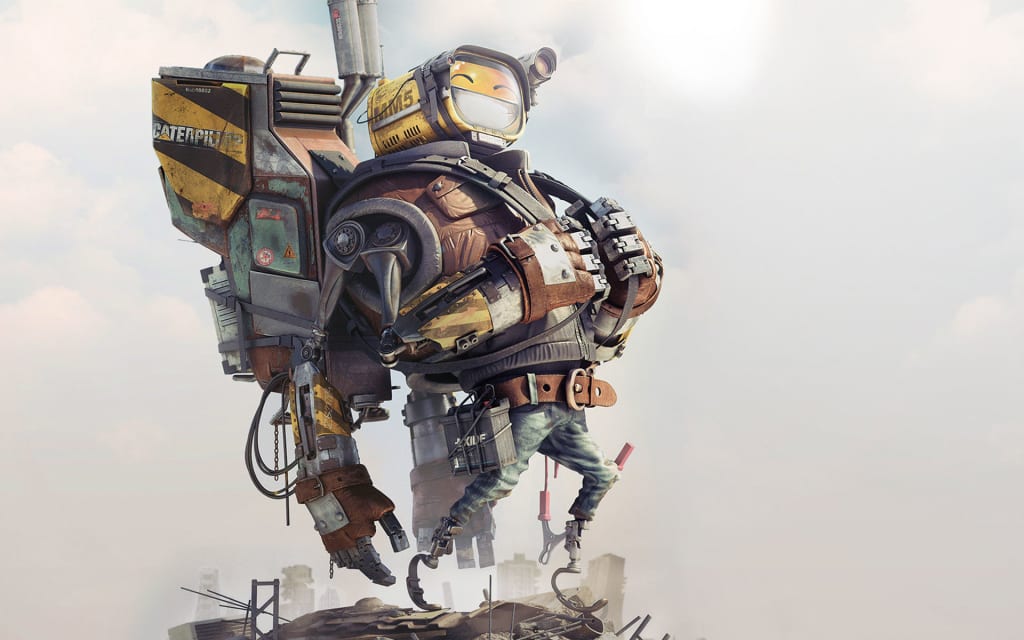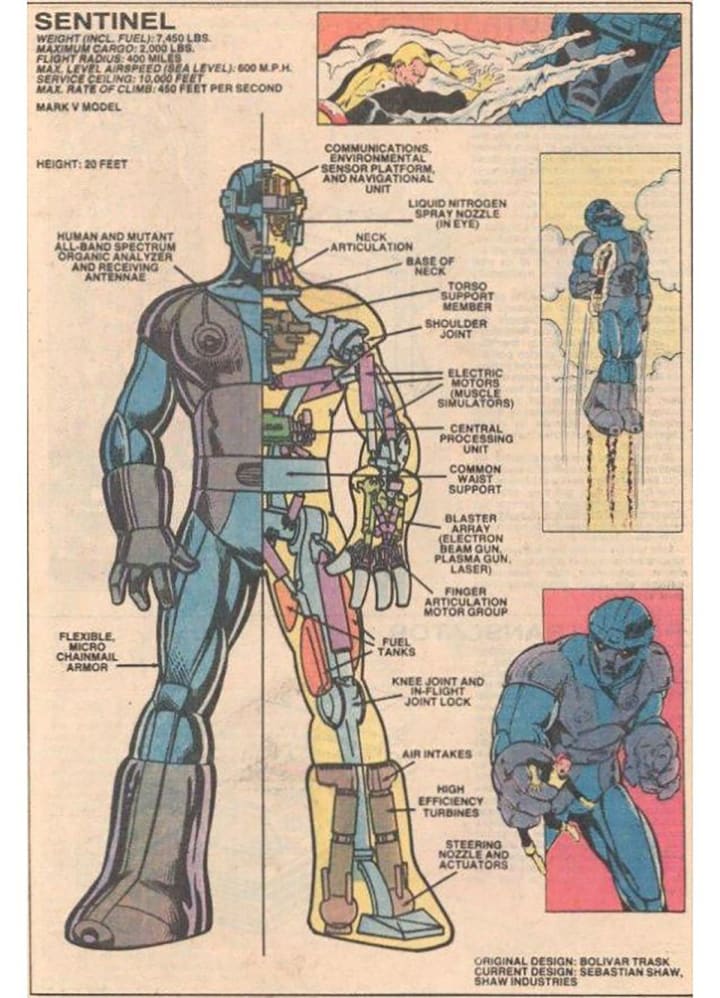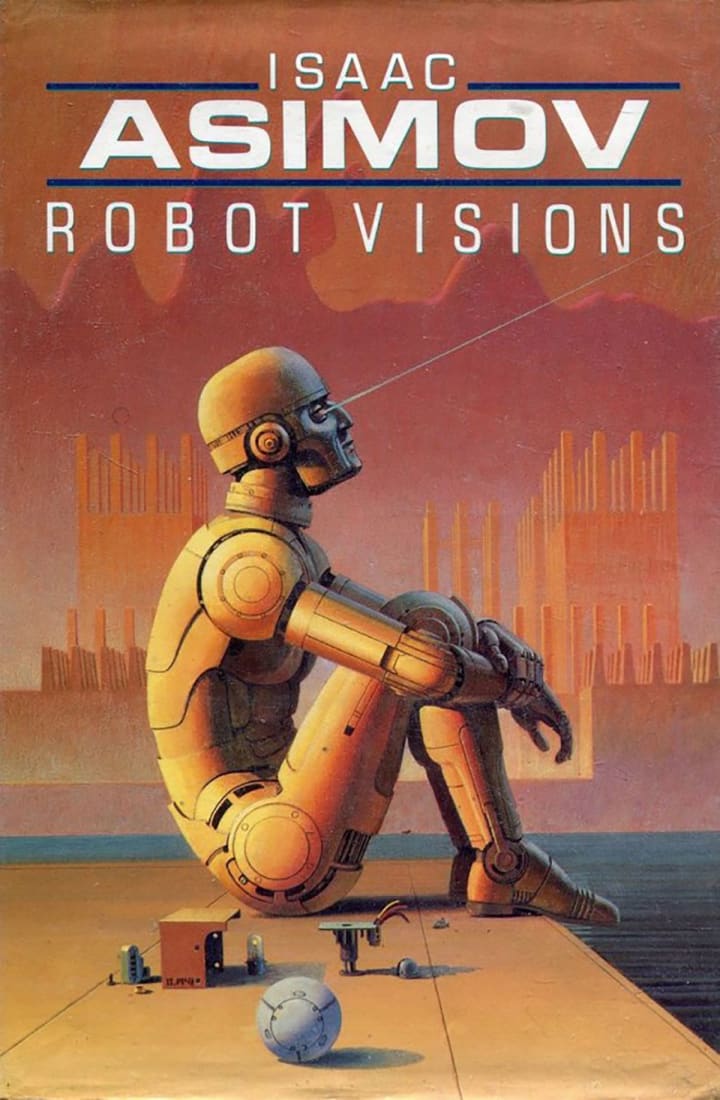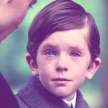Robots Imitate Life
If robots are not alive, then why do we wonder what they are thinking?

If you've been to an office, you probably know what a drop-ceiling is. It's the grid of whitish tiles in which light fixtures and ventilator grates are set. If you stand on a desk and push one of the rectangular tiles out of its frame, you can stick your head into the space above it and see your office building as it really is: air ducts and electrical cables, concrete beams and sprinkler pipes. When you lift the ceiling tile, you might feel a sensation of trespass as the secrecy above escapes into the office below. Once you know about the space above the ceiling, no office ever looks quite the same. Everything about an office looks strange when 30 percent of the building has to be hidden in order to make the other 70 look normal.
Take walking, for example.
Imagine a person walking in a profile view. One leg has just been planted on the ground, receiving the whole weight of her body. The leg on the ground is fully extended and straight, but her torso continues to move. It has momentum from the previous step. The leg planted on the ground begins to topple. Her trunk moves off center and she starts to fall. Then she makes things worse, using her toes to push her weight off the straight leg and out into space. After falling half an inch, her other leg snaps out in front of her body and hits the ground. Her weight lands on it. The second leg stiffens, straightens, and recovers the half-inch of altitude. Then the cycle starts again.
Walking is a process of continuously arrested falling. It's what happens when we discover how to turn this planet's gravity well into the most efficient way of moving ourselves across its surface. But try minding it. Walking is one of the many bodily processes that neither requires nor long tolerates our conscious intrusion. Breathing is another. Drawing every breath deliberately is almost as exhausting as refusing to take one. Trying to walk consciously will destroy its continuity, while reading, singing, nursing, eating, and even—especially—thinking are all perfectly compatible with cognition. What is it about deliberate control that destroys our ability to walk? The answer lies in science fiction.
Science Fiction Robots
Why do Gort, Tobor and Robbie all lumber? Why are robots always ponderous and awkward in our imagination? There are three ways of looking at the question.
- The first is the most obvious: They’re all men in suits. Robots lack grace because the sci-fi movies that formed their stereotype were low-budget. There wasn’t enough money to make robots walk like people, and so they became—and remain—stiff and hulking. This way of looking at the problem is perhaps the most literally true, and so also the least revealing. But thinking about men in suits does lead to the second way.
- Robots lumber because it is a reflection of their internal nature. The characteristics that make up the robotic soul shine outwards and create their physical appearance. Think of the classic robot attributes: loyalty, pitilessness, strength. Inflexibility in the sense of being faithful, merciless, and hard-fisted informs how a robot should behave and so, naturally, how it ought to walk. Robots cannot experience or express subtlety and this fact expresses itself in their gait. This answer is better than the first but it still doesn’t articulate what it is about walking that gives robots such difficultly.
- The third way is the real answer to the question: Robots lumber because they are not human.
Walking is what happens when you unify the act of supporting your weight with your leap into free fall; when you reconcile your opposition to gravity with your submission to it. When this give-and-take between opposites happens very quickly, it produces the illusion of smooth, lateral motion. Reconciliation of opposites like these into a middle way is a faculty that robots lack—because they can have only those aspects of ourselves that we can analyze and then consciously simulate. And we can’t think ourselves into walking. We don’t "know" how to walk, and so cannot program robots to do it with any facility. We can’t even teach it. Babies are not shown how to walk, they are encouraged to let go of the coffee table and—by a method of their own discovery—cross the living room floor. Where they fall into their parent’s beckoning arms.

via DARPA
Making Robots Walk
Making robots walk like us is difficult because the skills at the heart of being human are too close to excavate.
Walking is an example of our ability to weave opposites into usefulness. Our "highest skills are contingent on the unification of opposites;" this quote from a psychiatrist who studied human motion is profound because anything approaching an "essential" human quality—and therefore a quality which it would be useful to simulate in robots—will always remain in the corner of your eye. Imagine trying to explain why something is funny. Trying to point out something on the periphery of your vision makes you turn in circles, which is exactly what it feels like to explain a joke. Eventually you give up by replacing the profundity of humor with the profundity of being and say: "You had to be there."
Another way to think about the difficulty of abstracting our most useful qualities is to imagine ourselves submerged. We’ve been standing and walking for such a long time that those skills—and the opposites we unify to achieve them—have sunk right to the heart of us. And infiltrated our dreams. The two most stereotypical dreams that humans have, flying and falling, are testament. In these dreams our resistance and submission to gravity have been stripped from the cycle that walking transforms into forward motion, and we experience them unopposed. Any human faculty that trickles down through the mental strata until it joins the water table that supplies our dreams will pose a challenge to automation. The ultimate achievement of artificial intelligence will not be a conscious machine, but one that dreams. That is, if you can have one without the other.
Language Barrier
Another characteristic human activity in which the reconciliation of opposites breaks down is language. In the case of robots, the fact that we don’t "know" how to reconcile Up with Down simply makes our robots clumsy. In language, however, the consequences of this collapse are more tangible.
The world enters us and is immediately fragmented by language. In walking, opposites are constantly reconciled; In language, these oppositions live lives all their own. They don’t need to be reconciled with each other in order to be useful. While this is certainly a great help to conscious thought, it has also been a tragedy. Words like Up and Down are everywhere in our speech, but the distinction is especially clear in the language of morality:
We tend to think that falling is the pits because it lays us low and brings us down. You might get depressed or stoop to baseness if you are down and out for long enough. We would prefer to be on the up and up, doing super (L. super: above, over, on top) or even better, high. That’d be tops—pure heaven, (being high is sometimes tops enough to topple even the most stand-up guy, make him a failure [L. fallare: to trip or fall], and send him Down Below. Indeed, they have erected statues [L. stare: to stand] against it.)
As language developed in us—rising through our mental strata until it outpaced our talent for unifying its opposites—we became laden with a binary morality. Up or down, good or bad. This is one of the unforeseen consequences of abstract thought as English-speakers have inherited it.
The oppositions that flourish in language are fused only rarely and with incredible effort. When this happens, it's usually because wisdom or genius has been at work. This is what things like wisdom and genius are for. They are the constant darners who mend the reality that language leaves in shreds. They walk through the seeming sense that language gives the world, as every other part of us stumbles on the paradoxes that language generates. When we try to use language systematically, very quickly we feel ourselves lumbering. This is because thought that is perfectly ordered and explicit works against our deepest skills.

via Gizmondo
The Faerie Queen Robot
Systematic thought is also, often, profoundly unintuitive. Consider the example of the first robot in English literature.
This robot appears in a very long poem written in the 1580s by Edmund Spenser called The Faerie Queene. The poem narrates the adventures of several knights. One of them is named Artegal, who’s followed by a mechanical servant called Talus. This servant is remarkably similar to our modern stereotype of the science-fiction robot. Talus is immensely strong, merciless and incapable of falsehood—something like the T-800 that protects Edward Furlong. He’s also blessed with the moral intelligence of a three year old.
At one point in the story, Artegal chases the bandit Munera into her castle and orders Talus to kill her. Talus recognizes Munera’s guilt and begins to batter down her castle door with his iron flail. Talus's assault fills the castle's defenders with terror and in desperation Munera appears on the ramparts with sacks full of gold. Her men pour this gold onto Talus as she pleads with him to spare her life. As the coins bounce off his metal skin, he breaks through the castle gate.

Morality and Motion
Artegal and Talus search for Munera amid the castle's cowering inhabitants. Talus deduces that Munera would hide beneath her stolen gold because she knows that the robot isn’t there to loot. Talus plunges his arm into a heap of treasure and pulls Munera up by her blonde hair. She kneels at his feet and holds up her arms in supplication. Talus, unmoved, cuts off her hands and feet, takes them outside, then nails them to a high post to warn passersby of the punishment given to immorality. But Munera is still alive. Talus takes her by the waist and, holding her out in front of him, climbs to the top of her castle walls and throws her into a river, where she drowns in its mud. Later in the poem, after Artegal has been thrown into a dungeon by the villainess Radigund, Talus refuses to break him out because Artegal had broken a contract with her and so was technically in the wrong.
There is a connection between the lumbering morality—Talus's mercilessness and indifference—and the physical lumbering of all the robot stereotypes that ensued. Both Talus and his descendants were made to mimic human skills that cannot be performed without unifying opposites. The fact that Talus is fictional only shows off the artificial nature of the thing he was made to execute: binary morality. This morality is within us and it gives us no end of grief as we try to use it in a world that can only be traversed on the back of an endless cycle of reconciliation.
This morality is within us, and it is only part of the trove hidden above the ceiling tiles that make an office out of reality and the world into a secret.
About the Creator
George Lazenby
Unauthorized pseudonym of someone who became accidentally famous on Twitter. He is a contributor for OMNI when not unlocking the secrets of the universe.






Comments
There are no comments for this story
Be the first to respond and start the conversation.